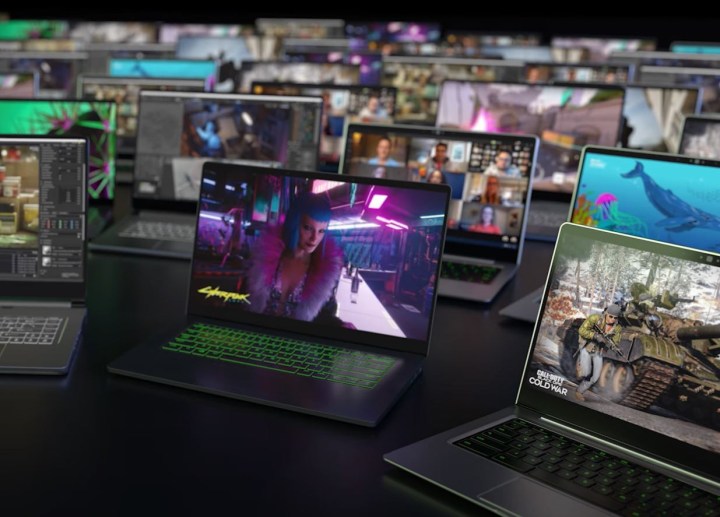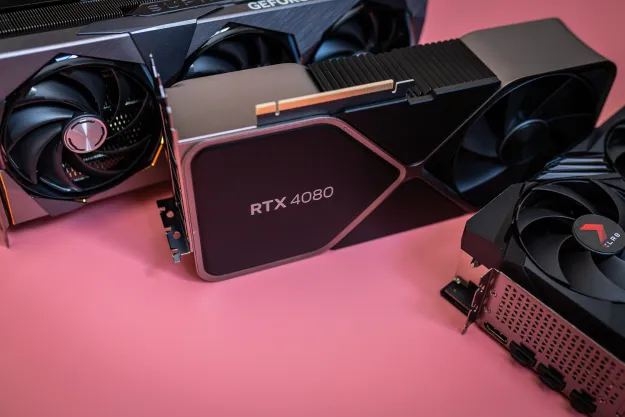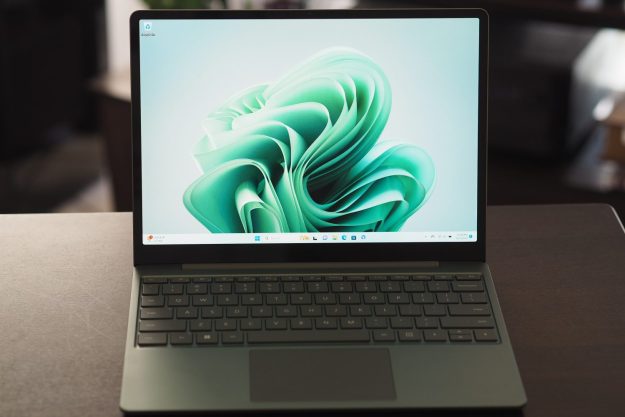
Do you know which 30-series mobile graphics card to buy? It’s a more difficult task than you might think. Nvidia currently offers eight distinct mobile graphics cards: The RTX 3050, 3050 Ti, 3060, 3070, and 3080, as well as the Max-Q variations of those last three. And then there are 42 distinct versions of these cards across the range, leading to widely varied performance depending on the version you get.
This comes down to the TGP, or Total Graphics Power, of the GPU. When designing a laptop, manufacturers have to decide how much board power to allocate to the graphics card, and they have some wiggle room. The more power the card receives, the faster its clock speed can be, which changes the raw power of the card.
A chart from u/Fidler_2K on Reddit shows just how different two cards with the same name can be. The RTX 3060 (non-Max-Q version) ranges anywhere between 10.94 TFLOPs to 13.07 TFLOPs depending on the TGP and clock speed. TFLOPs aren’t necessarily indicative of performance. However, it’s important to remember that both these cards still use the “RTX 3060” moniker, so it’s not a stretch to imagine that most potential buyers would assume they’re identical.
These differences aren’t theoretical, either. Take the MSI GS76 Stealth and Alienware M15, for example. Both machines feature an RTX 3060, but the MSI machine comes with 95 watts of TGP while the M15 has a TGP of 115W. On paper, these two machines have the same graphics card, but they’ll perform differently (for better or worse, we haven’t put the two head-to-head) based on the configurations that MSI and Alienware have settled on.

And it’s a real problem for potential laptop buyers. Nvidia started requiring manufacturers to list the TGP, clock speed, or both in February, but some manufacturers still haven’t jumped on board. MSI lists the specs on some product pages, while Dell has a separate page listing the TGP and clock speed of cards across its Alienware range. Gigabyte lists the specs, too. On the other hand, Razer and Acer don’t mention them at all.
If you’re buying a gaming laptop, make sure to pay attention to the TGP (where available). It could make a huge difference. The fastest RTX 3050, for example, is faster than the slowest RTX 3050 Ti.
TGP isn’t all that matters when it comes to choosing a gaming laptop. Manufacturers have a lot of leeway when it comes to how they configure their machines, so it’s important to consult individual laptop reviews before making a decision.
Editors' Recommendations
- Don’t buy the RTX 3060 in 2024
- Don’t buy the new MSI Claw handheld — at least not yet
- Please, don’t buy an AMD GPU right now
- Apple 16-inch MacBook Pro: don’t make a mistake you’ll regret
- Don’t wait for new GPUs. It’s safe to buy a gaming laptop now





